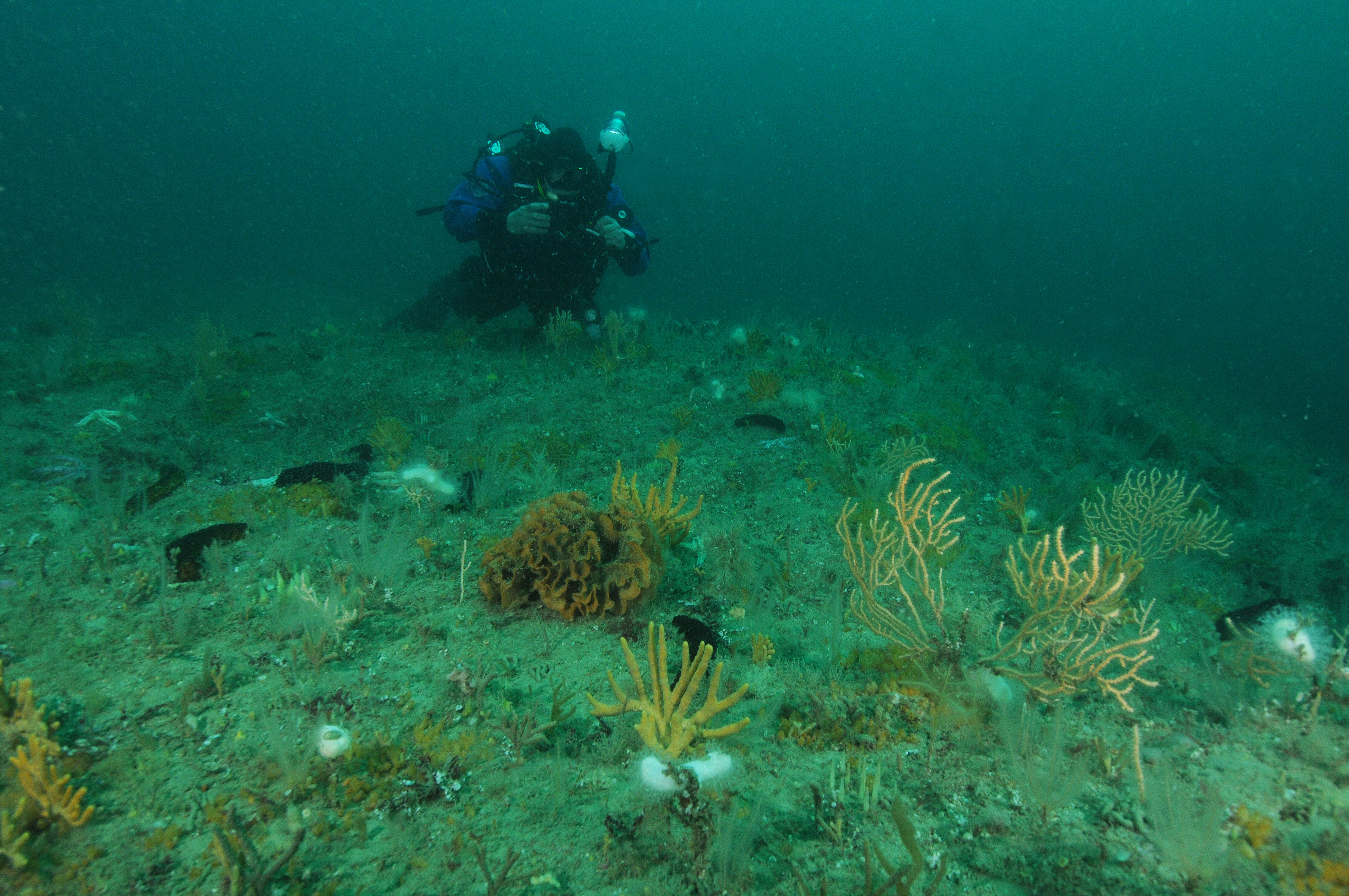
We'd like to introduce some of the UK's less well known, but vitally important marine species which we’re aiming to protect within Stage 3 Marine Protected Areas (MPAs).
In Stage 3 we're consulting on proposed fisheries management measures that would protect all designated seabed features in English offshore MPAs not already covered in Stages 1 and 2. The features include important habitats and species, essential for healthy and functional marine ecosystems.
Introducing the Blue Mussel
Don’t be fooled by their size and the fact they are commonly found in UK waters. Blue Mussels play an important role in maintaining healthy marine ecosystems, which is why they are a designated feature within MPAs and require areas set aside for their protection.
This species feeds and gains nutrition by filtering seawater, simultaneously removing harmful debris such as silt and algae, making the water cleaner and a more healthy environment for other species.
Also known as ‘common mussels’ they are often served in seafood restaurants and can even be bought in supermarkets.
For this reason, they are economically important as a source of food around the world. Their protection within our MPAs supports the sustainability and viability of the wider population.
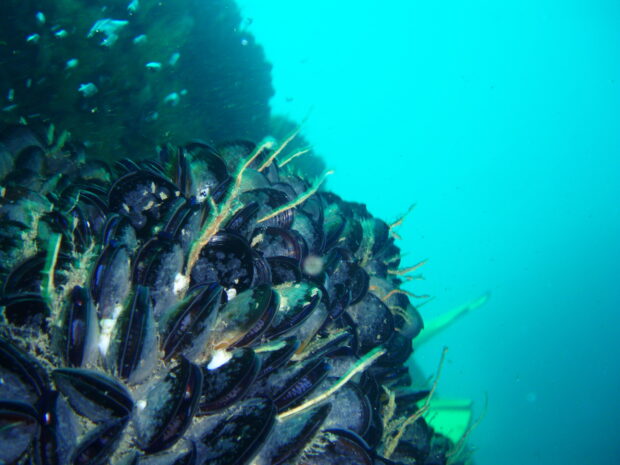
Close-up of a mussel bed. Credit @Natural England/Angie Gall #HiddenSeas
Introducing the Ocean Quahog
Ocean Quahogs are a long-lived species, with populations found to have individuals ranging from 40 to 80 and even 100-year-olds. Due to their long life-span and slow growth rate, they can take a very long time to recover from damage and disturbance, especially physical disturbance of the sediments and seabed caused by certain fishing activity.
The oldest reported ocean quahog record was 500 years old! This specimen was even given the name ‘Ming’.

Ocean quahog Liverpool Bay by Ian Wallace
Introducing the Fan Mussel
Fan mussels are one of Britain’s largest and most threatened molluscs. This species has a shell that is golden brown and is generally embedded in sediment.
In the UK populations occur as small groups of individuals forming mussel beds.
It has been estimated that an area of mussel bed the size of a tennis court (around 400,000 mussels) can filter the equivalent of four Olympic-sized swimming pools of seawater in one day. This demonstrates the importance of this species in maintaining a health ecosystem.
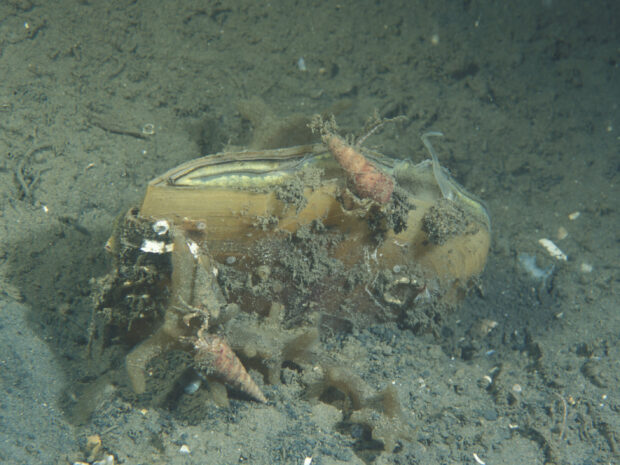
Introducing the Ross Worm
This species produces tube like structures that provide crucial habitats for other marine species.
They are a segmented worm which builds tunnel like tubes from sand or shell fragments. These tubes form reefs which can be several metres wide and up to 60cm high, covering several hectares.
These tube reefs can be found in subtidal areas, including exposed areas such as sandbanks along the shoreline with lots of sand available for tube building.
They are important for marine life as the tube-like structures provide a stable shelter and home in habitats that lack geological diversity.
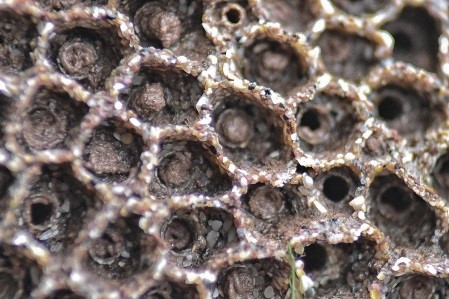
Introducing the Pink Sea Fan
The Pink Sea Fan is of national and international importance.
It is listed on the IUCN (international Union for Conservation of Nature) Red list as ‘vulnerable’ and is a UK priority species, a species of principle importance and a nationally scarce marine species.
Each sea fan is a colony of small anemone-like polyps (tiny sea animals) which share a hard skeleton.
Colonies of Pink Sea Fan form multiple branches that are covered in warty tube-like structures. These tubes form a vital habitat for the polyps which emerge from these tubes. They also provide a habitat for other species, including commercially important fish species.
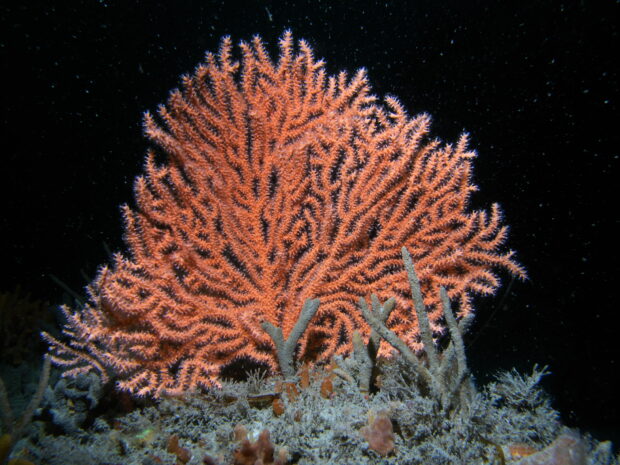
Stage 3 MPAs
We are asking for your views on our proposed fisheries management measures, which aim protect these species as well as sensitive habitats in 42 English MPAs.
Our proposed fisheries management measures are based on draft fisheries assessments which conclude that these measures are necessary to ensure, beyond reasonable scientific doubt, that the conservation objectives of these MPAs can be achieved. Consultation closes on 29 September 2025.
Find out more, view our consultation documents and share your views: Marine protected areas Stage 3 Consultation - GOV.UK